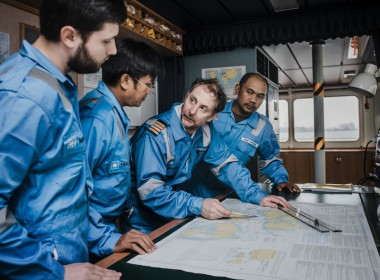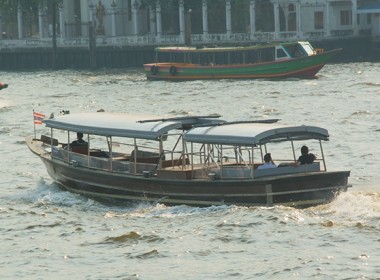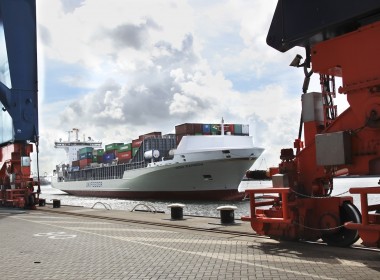COLUMN | Anchor away – but not aweigh [Grey Power]

These are febrile times and the recent shutdown of a gas pipeline across the Gulf of Finland, along with the apparent severing of at least one communication cable, has focused attention on geo-politics in this part of the world.
Was this a reprise of the earlier attack by an unknown agency upon the gas pipeline running down the gulf from Russia? It has been no coincidence that members of NATO and other nations have been investing rapidly in ships and equipment capable of stepping up surveillance upon the vital network of energy and communication links under the sea. Could this be a further instance of what has become known as “asymmetric” warfare, or an accident?
It now seems likely that the most recent incident was caused by an anchor, as a badly damaged anchor, minus one of its flukes, was discovered by Finnish authorities in the vicinity of the pipeline. Moreover, it has also been reported that there is evidence of this having been dragged along the bottom, probably severing the communication cables before its fatal meeting with the heavy gas pipeline. A Chinese containership, which had reportedly indeed lost an anchor, is said to be the chief suspect.
“The liabilities attached to this incident are likely to be eye-watering.”
It is a sign of the times that something that would otherwise have been recorded as a regrettable operational accident has become so political, with guarded messages from the Baltic states about the possibility of any fell intent. But could such an occurrence happen by accident, bad seamanship, or mechanical failure?
Certainly, it would not be the first time that undersea cables and pipelines have been damaged by accident. Trawlers dragging gear along the bottom tend to get the most blame, but there have been instances of cables being damaged by ships that dragged their anchors in bad weather or were merely anchored in the wrong place, ignoring the charted warnings.
Some years ago a ship, anchored where she should not have done, caused the shut-down of a North Sea oil pipe. It transpired that the master was using an outdated chart and the ship manager was found legally liable for not supplying him with the updated version. The costs were huge, suggesting that the liabilities attached to this incident are likely to be eye-watering.
Might it be feasible that a ship could be steaming along with its anchor dredging along the bottom? This also is certainly not unknown. Some dozen years ago, I went aboard a big cable repair ship that had just returned from several busy weeks in the English Channel, re-connecting cables that had been damaged in exactly these circumstances by a ship that had merrily steamed through the Dover Straits with an anchor on the bottom, severing every cable it encountered.
“It would not be the first time, and with the numbers of undersea obstructions from communications and energy proliferating apace, it is unlikely to be the last.”
Would you not know that an anchor was loose? Night, bad weather with water or spray coming over the bow, would have ensured that there were no visible signs from the vessel’s bridge, and there will be no instrumentation that might give away signs of the problem. The speed would be affected, but possibly it would be put down to tides or currents.
But surely there are mechanical devices designed to prevent the inadvertent dropping of an anchor? Normally, a ship putting to sea would, when the likelihood of having to use an anchor was past, secure the two anchors by ensuring that they are properly housed in the hawse pipes with heavy chain stoppers, devils’ claws, or senhouse slips and tensioners, along with a heavy steel guillotine over the topmost link. The anchors themselves will be also held securely on the brakes of the windlass. However, with the ship approaching a port, in soundings where anchors might be required or in bad visibility, all this securing tackle will be cleared, ready for instant use. The anchors will be then held on their brakes.
It is more than conceivable that a brake has not been applied sufficiently and that the anchor, after it has been cleared and the crew retreated aft, has walked its way down to the bottom of the Gulf of Finland, causing unseen mayhem as the ship proceeded to her port. It would not be the first time, and with the numbers of undersea obstructions from communications and energy proliferating apace, it is unlikely to be the last.








